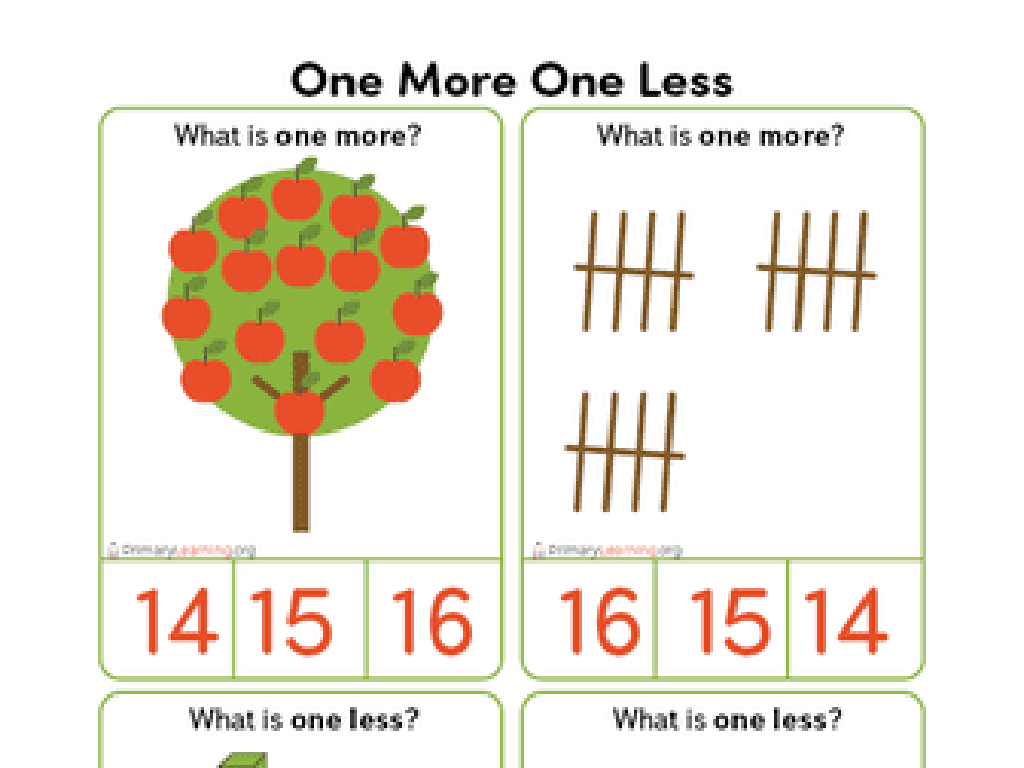Explore Chemical Structure And Properties: Soapmaking
Subject: Science
Grade: Eighth grade
Topic: Chemical Reactions
Please LOG IN to download the presentation. Access is available to registered users only.
View More Content
Exploring Chemical Reactions Through Soapmaking
– Understanding chemical reactions
A process where substances change into new ones with different properties.
– Daily life chemical examples
Baking bread, rusting iron, and digesting food are all chemical reactions.
– Introduction to soapmaking
Soapmaking is a reaction between fats and an alkali, producing soap.
– Learning outcomes
We’ll explore the chemical process of saponification and soap’s properties.
|
Begin the lesson by explaining what chemical reactions are and how they are a part of our everyday lives, from cooking to the very processes that sustain our bodies. Introduce the concept of soapmaking as a practical application of chemical reactions, specifically saponification. This will set the stage for a deeper dive into the chemistry behind soapmaking, including the reactants and products involved. Students will learn about the properties of soap and how its structure allows it to clean. Encourage students to think of questions they have about everyday chemical reactions and how they might relate to the process of making soap.
What is Soap? Exploring its Role and Uses
– Soap: Definition and utility
– A cleansing agent formed from fats or oils and an alkali like lye.
– How soap cleans
– Soap molecules have two ends: one attracts water, the other repels it, trapping dirt for removal.
– Soap’s chemical properties
– Soap is a salt of fatty acid, used for washing and cleaning.
– The prevalence of soap in daily life
– Found in various forms: bars, liquids, powders, used for personal hygiene and laundry.
|
This slide introduces students to the basic concept of soap, its uses, and its role in cleaning. Begin by defining soap as a product resulting from the chemical reaction between a fat or oil and an alkali, producing a substance that aids in cleaning. Explain how soap works on a molecular level, with one end of the soap molecule attracting water and the other repelling it, which allows it to remove dirt and grease. Discuss the chemical properties that categorize soap as a salt of fatty acid and its various applications in our daily lives, from personal hygiene to household cleaning. Encourage students to think about the different types of soap they use at home and how it makes cleaning easier.
Chemical Structure of Soap: Cleaning Essentials
– Unique structure of soap molecules
– Soap has a hydrophilic head and a hydrophobic tail, allowing it to bind with both water and oils.
– Interaction with water and oil
– Soap molecules act as emulsifiers, helping water to mix with oil and dirt, making them easier to rinse away.
– Science behind cleaning action
– The hydrophobic tails of soap attract non-polar oil molecules, while hydrophilic heads remain in water, lifting away grime.
– Practical implications in daily life
|
This slide delves into the chemical structure of soap and its role in cleaning. Soap molecules have a dual nature, with one end that’s attracted to water (hydrophilic) and another that’s repelled by water but attracted to fats and oils (hydrophobic). This allows soap to interact with both water and oil, breaking down grease and dirt so they can be washed away. The cleaning action of soap is a result of this interaction, as soap molecules surround oil droplets, allowing them to be rinsed off with water. Discuss the practical applications of this science in everyday life, such as washing hands and dishes, and how this understanding can lead to better hygiene practices.
Chemical Properties of Soap
– Understanding soap’s pH levels
– Soap typically has a pH level between 9-10, which is alkaline
– Soap interaction with water types
– Soap’s effectiveness varies with hard and soft water
– Antibacterial properties of soap
– Soap can remove bacteria by breaking down lipid membranes
|
This slide explores the chemical properties of soap, an everyday substance with a significant role in hygiene and chemistry. Discuss the pH levels of soap, which is usually alkaline, and how this affects its cleaning properties. Explain how soap interacts differently with hard and soft water, including its effectiveness in forming lather and removing dirt. Highlight soap’s antibacterial properties, emphasizing its ability to disrupt bacterial cell membranes, which helps prevent the spread of germs. Encourage students to think about the science behind products they use daily and how chemical properties affect their function.
The Science of Soapmaking
– Essential soap ingredients
– Oils or fats, lye (sodium hydroxide), and water are basic necessities.
– Understanding saponification
– Saponification is the chemical reaction between fats and lye that produces soap.
– Safety protocols in soapmaking
– Always wear gloves and goggles; work in a well-ventilated area.
|
This slide introduces students to the chemical process of making soap, which is a practical application of their knowledge about chemical reactions. The essential ingredients include oils or fats, lye, and water. The saponification reaction is the core of soapmaking, where the lye reacts with the fats to create soap and glycerin. Emphasize the importance of safety measures such as wearing protective gear and working in a ventilated space to prevent accidents. This slide sets the stage for a potential hands-on activity where students can observe the transformation of raw materials into a usable product while understanding the underlying chemical principles.
Understanding Saponification in Soapmaking
– Saponification chemical equation
– A reaction between an ester and an alkali, producing soap.
– Lye’s role in soap creation
– Lye, a strong alkali, reacts with fats/oils to form soap.
– By-products of saponification
– Glycerol and soap are the main by-products.
– Safety measures in soapmaking
– Proper handling of lye is crucial due to its causticity.
|
Saponification is a key chemical reaction in soapmaking, where fats or oils react with lye (sodium hydroxide) to produce soap and glycerol. The chemical equation for saponification should be written on the board for students to understand the reactants and products involved. Emphasize the role of lye as a necessary reactant and discuss the by-products, highlighting that glycerol is useful in various industries. Safety is paramount when handling lye due to its corrosive nature, so discuss appropriate safety measures and equipment, such as gloves and eye protection. Encourage students to ask questions and consider the implications of this reaction in the context of everyday products.
Exploring Soapmaking: Types and Properties
– Overview of soapmaking methods
– Traditional cold process, melt and pour, hot process
– Soap varieties: bars, liquids, gels
– Different forms for different uses; personal preference
– Role of additives in soap
– Additives enhance scent, color, and texture
– Experimenting with soap properties
|
This slide aims to introduce students to the diverse world of soapmaking, highlighting the various methods used to create soap, the different forms it can take, and the role of additives. Discuss traditional soapmaking methods such as the cold process, which involves mixing fats with lye, and the hot process, which is similar but includes cooking the soap. Introduce ‘melt and pour’ as a simple method where premade soap bases are melted and molded. Explain that soaps come in solid bars, liquid washes, and gels, catering to different uses and personal preferences. Discuss how additives like fragrances and colors are used to enhance the sensory properties of soap. Encourage students to think about the chemical reactions involved in soapmaking and how changing ingredients can alter the properties of the final product. In the next class, consider conducting a simple soapmaking experiment to illustrate these concepts.
Environmental Impact of Soap
– Biodegradability of soap
– Soap can break down naturally, lessening environmental impact.
– Soap’s role in water pollution
– Some soaps contain chemicals that harm aquatic life.
– Choosing eco-friendly soaps
– Soaps made with natural ingredients reduce pollution.
– Impact on ecosystems
– Chemicals from soaps can disrupt habitats and biodiversity.
|
This slide aims to educate students on the environmental considerations of soapmaking and usage. Discuss the concept of biodegradability and how it applies to soaps, emphasizing that biodegradable soaps are less harmful to the environment. Highlight the negative effects of certain soaps on water systems, particularly how they can lead to pollution and affect aquatic ecosystems. Encourage students to think about eco-friendly alternatives, such as soaps made with natural, non-toxic ingredients. Finally, discuss the broader impact of soap chemicals on ecosystems and biodiversity. The goal is to foster an understanding of the environmental consequences of everyday products and to inspire more environmentally conscious decisions.
Class Activity: Make Your Own Soap!
– Gather soapmaking materials
– Collect oils, lye, molds, and safety gear like gloves and goggles.
– Follow the soapmaking steps
– Carefully mix lye with oils, pour into molds, and allow to set.
– Customize with colors and scents
– Add your favorite colors and scents to personalize your soap.
– Observe safety precautions
– Always use gloves and goggles to protect from lye.
|
This hands-on activity is designed to help students understand the chemical process of saponification, which is the reaction of lye and fats to create soap. Students will gather materials including various oils, lye, molds, and safety equipment. They will follow a step-by-step procedure to mix the ingredients, emphasizing the importance of safety when handling lye. Students can then customize their soap with colors and scents of their choice. Teachers should prepare different stations with materials for the activity and supervise closely to ensure safety. Possible variations of the activity could include using different types of oils, adding natural exfoliants, or experimenting with layering techniques to create unique soap designs.
Conclusion: Soap’s Chemistry & Safety
– Recap soap’s chemical structure
– Soap molecules have a hydrophilic and a hydrophobic end
– Discuss soap’s properties
– Soap cleans by emulsifying grease and dirt
– Emphasize safety in reactions
– Always wear protective gear and follow instructions
– Q&A session
|
As we conclude our exploration of soapmaking and its chemical properties, remind students of the dual nature of soap molecules, which allows them to interact with both water and oils. Highlight how this property is essential for soap’s cleaning action. Emphasize the importance of safety when handling chemicals, including wearing protective gear and following proper procedures. Finally, encourage students to ask questions about anything they may not understand or wish to know more about, fostering an environment of curiosity and learning.






